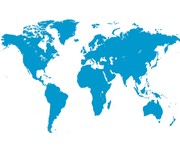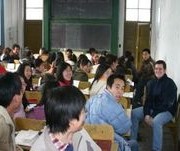If you’re already a qualified diver and also happen to make your own pasta, know your wines and shimmy across the dance floor, our regular language and activity courses such as diving, cooking, wine tasting and salsa are perhaps a little old-hat for you.
So, if you’re looking for something a little different that will certainly be a talking point down the pub, here are 10 cool, quirky and off-beat courses that might just be right up your street.
1. Spanish & Culture through Love, in Valencia, Spain:
Probably the most unique and fun Spanish course you will ever take, this course teaches you Spanish with music, films and literature based on, you guessed it, love. Visit a Spanish wedding or let your hair down at a bachelor’s party…you’ll either fall in love with it or on it!
Spanish & Love course in Valencia
2. Spanish & Polo in Buenos Aires, Argentina:
Learn Spanish during the week and spend your weekends at a typical Estancia learning polo, eating traditional Argentine asado and chilling by the pool!
Spanish & Polo in Buenos Aires
3. Spanish & Horse-riding in Montevideo, Uruguay:
If you ever fancied yourself as a South American gaucho, this is the course for you! You will stay on a ranch close to the Brazilian border, horse-ride for a few hours each day and spend the rest of your time swimming, fishing, bird watching or taking a boat ride on the river. Yee-haw!
Spanish & Horse-riding in Montevideo
4. Italian & Fashion Design in Milan, Italy:
Armani, Moschino, Gucci, Versace…all the best designers come from Italy, and you could too. This 4-week programme will prepare you for fashion or design school and give you a unique insight into the Italian fashion industry, all in the fashion capital of Milan.
Italian & Fashion Design in Milan
5. Italian & Opera in Verona:
If you like a bit of a sing song, it doesn’t get much better than learning opera in Verona. Taught by the Musical Stage Director of the prestigious Fondazione Arena di Verona, your vocal chords will reach notes you didn’t know they were capable of and your Italian will improve enormously too.
Italian & Opera in Verona, Italy
6. Portuguese & Capoeira in Salvador de Bahia, Brazil:
It looks cool, but what exactly are they doing? The Brazilian art of capoeira is part-dance, part-martial art, and there’s nowhere better to master the power kicks and leg sweeps than in its true home, Brazil.
Portuguese & Capoeira in Salvador
7. French & Gourmet Food in Rouen, France:
If you enjoy good food, this course in Rouen is almost too good to be true. Not only does it take place at one of the best French language schools in Europe, but typical activities include gourmet meals at award-winning local restaurants, a visit to Camembert village and tastings at Calvados distilleries. Encore, s’il vous plait!
French & Gourmet Food in Rouen, France
8. Mandarin Chinese & Calligraphy in Xian, China:
The ancient Chinese art of calligraphy is a wonderful way to immerse yourself in Chinese culture whilst studying the language. Your calligraphy classes will teach you how to produce beautiful Chinese characters using traditional techniques…definitely one to write home about.
Chinese & Calligraphy in Xian
9. Japanese & Pop Culture in Fukuoka, Japan:
This course is a must for anyone into Japanese manga, music and movies. Using the latest in Japanese pop culture to teach you Japanese as it’s really spoken, it includes fun out-of-class activities in the attractive and cultural city of Fukuoka.
Japanese & Pop Culture in Fukuoka
10. Spanish & Digital Photography in Jaco Beach, Costa Rica:
Don’t know the difference between your shutter speed and aperture? Get more out of your photos with this fantastic course on Costa Rica’s Pacific coast and come home with snaps to be proud of.
Spanish & Digital Photography in Jaco Beach
Cactus offers language courses in more than 30 languages, in 60 countries and 500 destinations worldwide.




